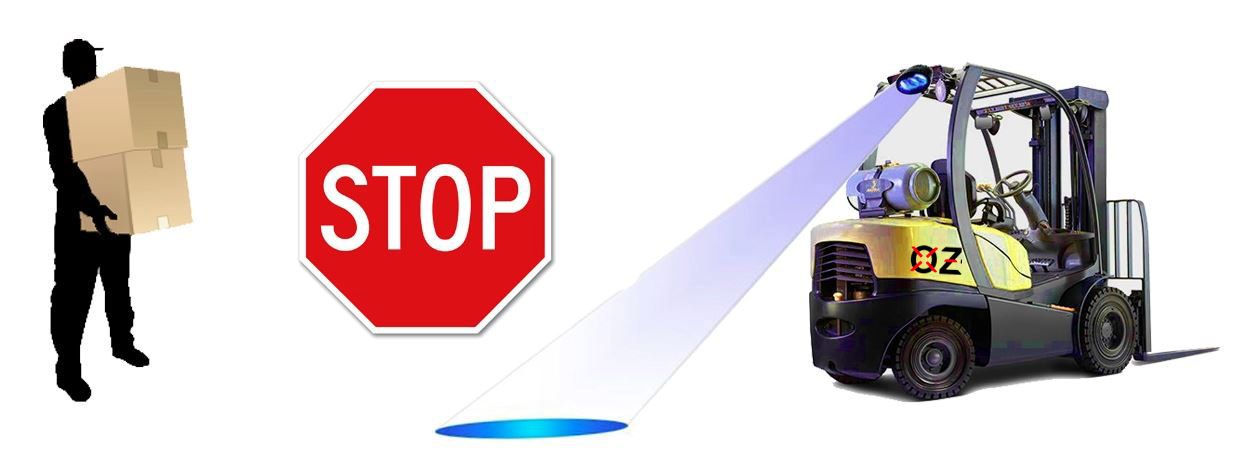How Forklift Blue Spotlights Help Prevent Accidents at the Workplace

Safety in the workplace is of utmost importance, especially in environments where heavy machinery and equipment are involved. Forklifts, commonly used in warehouses, manufacturing plants, and construction sites, pose significant risks if not operated and managed carefully. According to the Occupational Safety and Health Administration (OSHA), forklift accidents account for a significant number of workplace injuries and fatalities each year. However, thanks to advancements in technology, innovative solutions from this source, such as forklift blue spotlights, have emerged as a valuable tool in accident prevention. This article explores the importance of forklift blue spotlights and how they can help prevent accidents in the workplace
Understanding Forklift Accidents
Forklift accidents can result in severe injuries, property damage, and even loss of life. These accidents often occur due to a combination of factors, such as operator error, limited visibility, and the presence of blind spots. Forklifts are designed with a rear-wheel steering mechanism, making it challenging for operators to see what is directly behind them. This limitation increases the risk of collisions with pedestrians, other vehicles, or stationary objects.
Common Accident Scenarios
Pedestrian Collisions: Forklift operators may have difficulty seeing pedestrians, especially when they are in their blind spots or moving around corners or tight spaces.
Rear-end Collisions: When reversing, forklift operators may unintentionally collide with stationary objects, such as storage racks, walls, or equipment, due to limited visibility.
Intersection Collisions: Forklifts often operate in areas with intersections, where different pathways intersect. Operators may fail to notice other vehicles or pedestrians, resulting in potentially catastrophic accidents.
Role of Forklift Blue Spotlights
To address these visibility challenges and reduce the risk of accidents, forklift blue spotlights have been developed and widely adopted in various industries. The blue spotlight technology involves mounting a blue LED light on forklifts, which projects a visible blue spot or beam on the ground behind or around the forklift. This blue spot acts as a visual warning to alert pedestrians and other workers of the presence of the forklift, even if the operator’s view is obstructed.
Advantages of Forklift Blue Spotlights
Enhanced Visibility: Forklift blue spotlights significantly improve visibility, especially in areas where blind spots exist. The blue spot projected on the ground serves as an early warning system, allowing pedestrians and other operators to be aware of the approaching forklift.
Prevents Pedestrian Collisions: By illuminating the path behind the forklift, blue spotlights help prevent accidents involving pedestrians. Workers are alerted to the presence of the forklift, enabling them to take appropriate precautions and avoid potential collisions.
Reduces Forklift-Related Injuries: Blue spotlights can reduce the likelihood of injuries caused by forklift accidents. When workers are aware of the forklift’s location, they can maintain a safe distance and make informed decisions to protect their well-being.
Prevents Property Damage: Forklift collisions with stationary objects can lead to costly property damage. The blue spotlights provide a clear visual indicator of the forklift’s movements, allowing operators to avoid accidental collisions with racks, walls, or other equipment.
Improves Operator Confidence: Forklift operators benefit from increased confidence and situational awareness due to the enhanced visibility provided by blue spotlights. This can lead to better decision-making and safer operations.
Implementation and Integration
The installation and integration of forklift blue spotlights are relatively simple and can be done on most types of forklifts. The blue spotlight devices are usually mounted at the rear or sides of the forklift, facing outward. The positioning should be such that the projected blue spot effectively covers blind spots and alerts individuals in the vicinity. Additionally, the blue spotlights are designed to withstand the rigors of industrial environments, ensuring their durability and reliability.
Complementary Safety Measures
While forklift blue spotlights play a vital role in accident prevention, they should be considered as part of a comprehensive safety strategy. Employers and operators must implement additional safety measures to ensure a safe working environment. These measures may include:
Training Programs: Thorough training programs for forklift operators and other workers are essential. This includes comprehensive instruction on forklift operations, safety protocols, and awareness of blue spotlight systems.
Traffic Management: Clearly defined traffic routes, signs, and barriers help separate forklifts from pedestrians and other vehicles, minimizing the chances of collisions.
Personal Protective Equipment (PPE): Workers should be equipped with appropriate PPE, such as high-visibility vests, helmets, and steel-toed boots, to enhance their visibility and protect against potential hazards.
Maintenance and Inspections: Regular maintenance and inspections of forklifts should be conducted to ensure their safe operation. This includes checking the functionality of blue spotlight systems.
Conclusion
Forklift accidents pose a significant risk in the workplace, but technology has come to the rescue with forklift blue spotlights. These innovative devices have proven to be effective in preventing accidents by improving visibility and alerting workers to the presence of forklifts, particularly in blind spots. By incorporating forklift blue spotlights into their safety protocols, employers can enhance workplace safety, reduce accidents, and protect their workforce from potential injuries and fatalities. When combined with comprehensive training programs and other safety measures, blue spotlights can significantly contribute to creating a safer and more efficient working environment.






